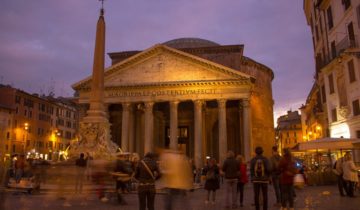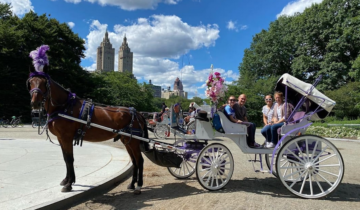Xian travel attractions? Terracotta Warriors and Horse Museum To visit the Terracotta Warriors Museum is the main reason why you are here in Xian. You may have already seen its pictures from China travel books or China tour related travel websites. The original site was found by a local farmer digging a well in 1974. Now it has turned into the most important attraction in Xian – Terracotta Warriors and Horse Museum. It is located about 30km east of the Xian City. The museum includes Pit 1, Pit 2 and Pit 3 as well the exhibition hall of the chariots and horses. The Pit 1 is the largest of the three.
Sorry Disneyland: Hong Kong’s original theme park is also its most beloved. You’ll find Ocean Park on the south side of Hong Kong Island. Make sure you take a peek at the two resident giant pandas, Ying Ying and Le Le, then catch a lift on the cable car over the cliffs, and on to the hair-raising rollercoasters, other attractions and an array of marine animals and exotic birds. Oh, and if you’re in Hong Kong during Halloween, Ocean Park is also incredibly popular for its month-long – and genuinely rather spooky – Halloween attractions.
China is a fabulous location if you are looking for ancient history mixed with modern attractions exploration. It was while digging wells on the outskirts of Xi’an in the 1970s that farmers stumbled across what was to be China’s most important archeological find: the Terracotta Army. Distributed over three large underground pits and built to guard the First Emperor’s tomb were more than 8,000 life-size warriors, some 520 horses, and more than 100 chariots, along with numerous other non-military characters dating from around 280 BC. Although some were severely damaged due to the passing of time, many of the statues unearthed have been painstakingly re-assembled and stand as testament to the importance bestowed upon the emperor and the afterlife. The site — part of the Emperor Qin Shi Huang’s Mausoleum Site Park — is one of China’s most important tourist destinations and offers the unforgettable experience of standing in front of this assembly of soldiers and horses as if inspecting a centuries-old parade. See even more information on Chengdu to Xian tour.
Echoing Sand Mountain is a series of dunes surrounding Crescent Lake. Named for its distinctive shape and aural characteristics, its echoes can be heard as the wind blows over the dunes. Visitors ride camels up the dunes, which rise to 250 meters. With gardens blooming on its banks, Crescent Lake offers a lovely visual counterpoint to all that sand. Echoing Sand Mountain and Crescent Lake is six kilometers south of Dunhuang. China Southern operates a daily return flight between Xi’an Xianyang Airport and Dunhuang Airport. Air China flies between Beijing and Dunhuang once a day.
Located in the very heart of Beijing, magnificent Forbidden City, also known as Imperial Palace Museum, is the symbol of imperial power. Built in Yongle Period, Ming Dynasty (1406 – 1420 AD), it is the largest and well-preserved wooden building complex of the world. These were laid out very precisely in accordance with a feudal code of architectural hierarchy which designated specific features for reflecting the paramount authority and status of the emperor. Forbidden City can be taken as a sample of the traditional Chinese palatial architecture. In 1987, it became a World Heritage Site. Besides, it is also listed by UNESCO as the largest collection of preserved ancient wooden structures in the world.
Pudong is a district in Shanghai on the eastern side of the Huangpu River that has emerged as China’s financial and commercial hub. A skyline of gleaming skyscrapers rises out of what was mere farmland only 20 years ago. Skyscrapers includes the symbolic Oriental Pearl Tower, the Shanghai World Financial Center, the Jin Mao Building and the Shanghai Tower that was finished in 2014. The Hani Rice Terraces are located on the southern slopes of Ailao Mountain in Yuanyang, and have been cultivated for over 1,000 years. Carved by hand by the Hani people, these rice terraces have turned a barren hillside into a lush sub-tropical paradise. Water is saved in the hilltop forests, and channeled down to the terraces for irrigation. The rice terraces are flooded from December to March, presenting a spectacular view to travelers. Read additional information at https://www.chinaxiantour.com/.



